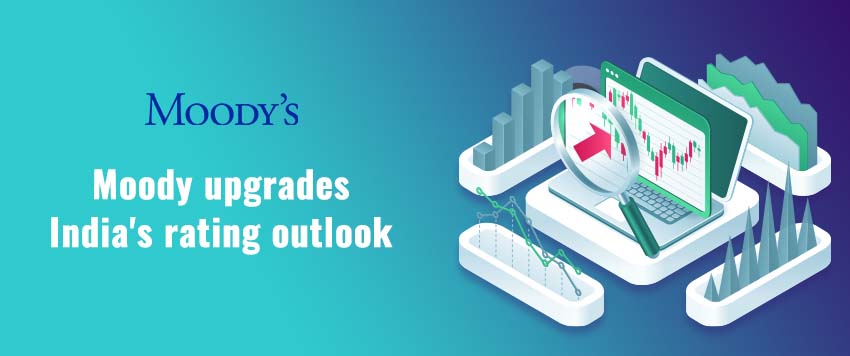Moody’s Upgrades India’s Rating Outlook to “Stable”

Last Updated: 14th December 2022 - 05:40 am
On 05th October, Moody’s raised India’s sovereign rating outlook from “Negative” to “Stable”. However, the sovereign rating for India’s local and foreign currency debt was maintained at Baa3. It may be recollected that at the peak of the pandemic in May 2020, Moody’s had downgraded India’s sovereign rating from Baa2 to Baa3 with negative outlook.
Just to give a perspective, India’s ratings continue to be below the pre-2020 levels. The current rating of Baa3 is the lowest investment grade rating assigned by Moody’s and even one notch below this level would put India in speculative category. Among other major countries in the Baa3 category are Italy and Russia.
One of the big reasons for this outlook upgrade was that the vicious cycle created by the pandemic was abating in India. During the pandemic, the weak real economy was hitting the financial markets, which was in turn hitting the real economy. According to Moody’s India appears to have broken out of that vicious cycle for now.
Among the 3 major global rating agencies, now Moody’s and S&P have placed India in the low investment grade with stable outlook. However, Fitch continues to position India in the low investment grade category with negative outlook. By upgrading the outlook to stable, Moody’s gives additional buffer to India as protection against downgrade to speculative.
Moody’s has been Impressed specifically by the sharp bounce in GDP, despite the pandemic. Moody’s underlined that the aggressive vaccination program that had inoculated more than 90 crore Indians was largely instrumental in making India less vulnerable to any resurgence of delta variants. The current account moving from deficit to surplus was also positive.
Moody’s has raised some pertinent concerns too.
i) Per Capita income at under $2,000 in absolute terms and $6,400 in PPP terms is much lower than the peer group.
ii) Moody’s also pointed that the fiscal deficit levels at 9.5% and 6.8% were too high for comfort. The combined deficit at 13.5% was another dampener.
iii) One area of concern was the spike in debt levels with average debt levels surging in 2021 to well above the peer group median.
iv) Moody’s also appreciated the role of the government and the RBI in helping India spend its way out of trouble, but insisted on continued reforms.
As Moody’s summed it up, India has never defaulted on any debt in the last 38 years. That should put investors in comfort zone.
- Flat ₹20 Brokerage
- Next-gen Trading
- Advance Charting
- Actionable Ideas
Trending on 5paisa
Indian Stock Market Related Articles
Disclaimer: Investment in securities market are subject to market risks, read all the related documents carefully before investing. For detailed disclaimer please Click here.
 5paisa Research Team
5paisa Research Team
 Sachin Gupta
Sachin Gupta




